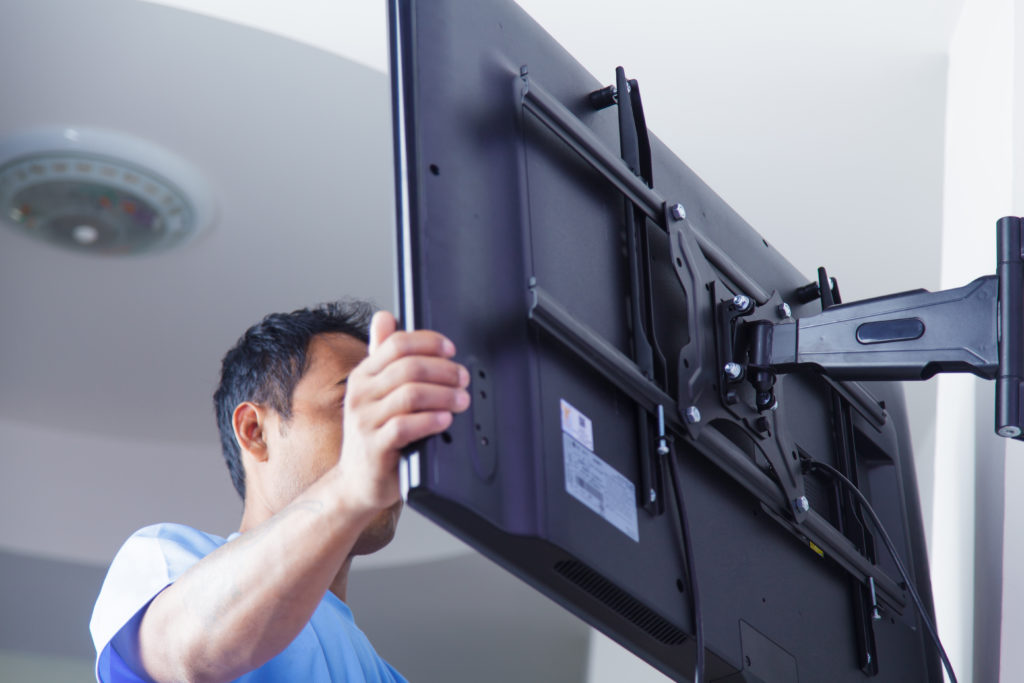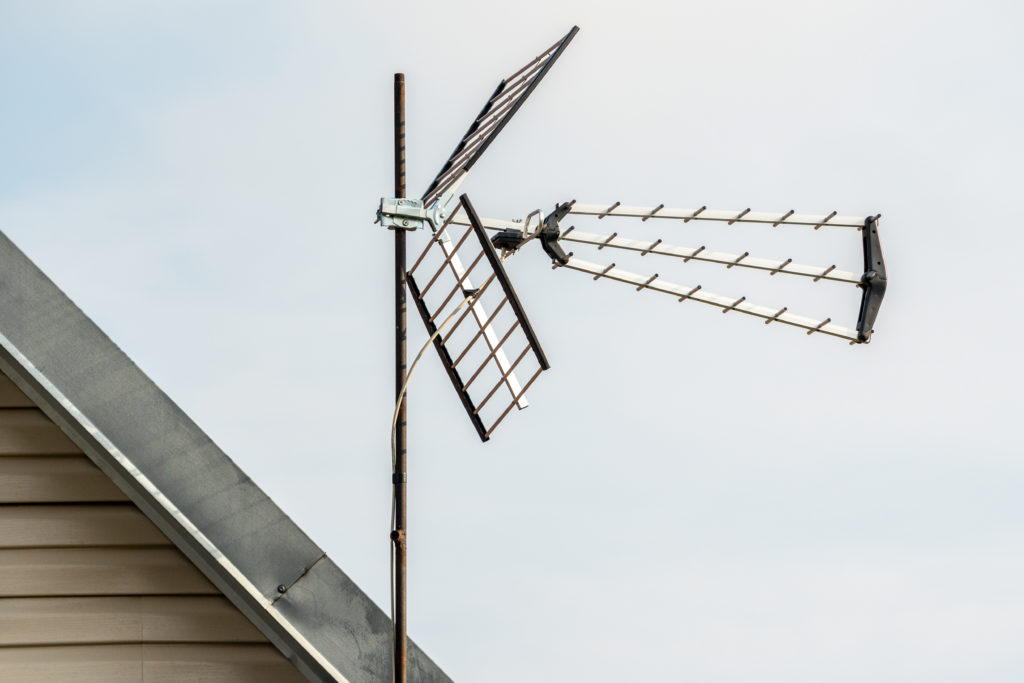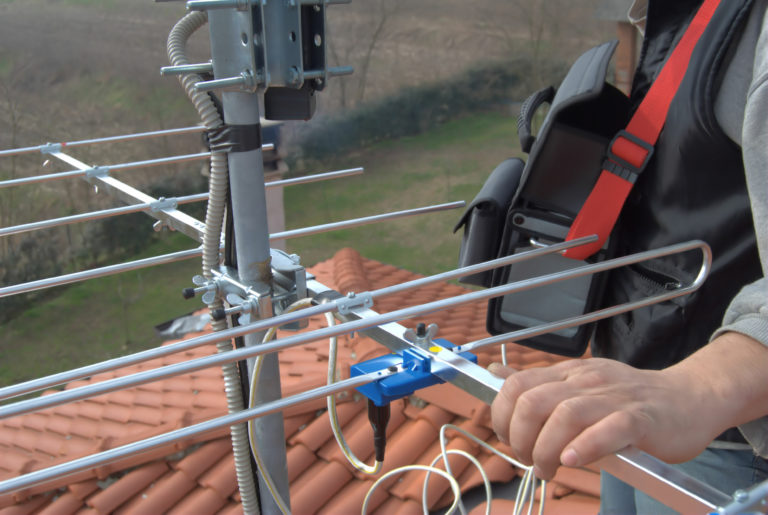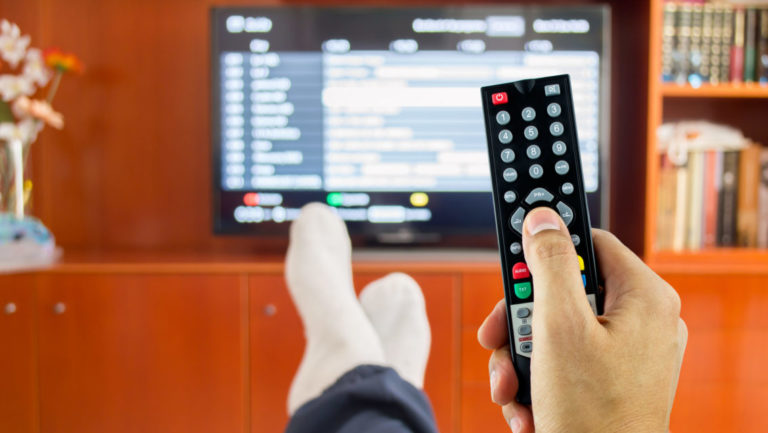Watching over-the-air (OTA) television is the best way to enjoy all kinds of free shows, movies, sports, news and special events, and when it comes to capturing television signals, outdoor antennas often offer the best reception. Because outdoor antennas are more powerful and experience fewer obstructions, they provide you with better signal quality and better image quality, along with better range. Outdoor TV antennas can be more reliable as a result and require a lot less adjusting — which is good, because they are also less accessible on a daily basis.
However, outdoor antennas can be harder to install than indoor versions. With an indoor antenna, you can often place it in a window or use simple tools to tape it in a high spot and you’re done. Outdoor TV antenna installation requires a bit more DIY skill. If you’re not handy, or if you have safety concerns, you may need to consider asking some friends to help or hiring a professional to do the job for you. Here’s what you need to know about outdoor TV antenna installation.
Step. No 1: Get Your Supplies Together
Every outdoor TV antenna installation will be different, although at a basic level you will need a television with a digital tuner and coaxial cable inputs. If your TV doesn’t have one of these, you’ll need a converter box, or digital tuner, to receive and manage your broadcast channels. Basically, you need to make sure you can connect your antenna physically to your converter and then your television set.
What you need for outdoor TV antenna installation depends on where you’re putting it and how you’re placing it there. Here are some supplies you may need:
- Antenna mast, pole, base, wall bracket, or chimney mount strap (to secure your antenna to the top or side of the house)
- Guy wires and u-bolts (to secure antenna to base or mast)
- Coaxial cable and fittings
- A rotator, second antenna or signal booster, if you’re planning to install one
- Sealant (to plug up holes)
- Compass (to point at towers)
- Level tool
- Ladder
- Screwdriver
- Power drill
- Adjustable wrench
- Roofing screws

Step No. 2: Set Up Your TV And Test Reception
Your antenna may come unassembled, which means you’ll have to put it together before you do anything else. After that, you’re going to want to go ahead and connect your TV and your antenna using a coaxial cable. This should be a simple plug-and-play operation using the “Antenna/Cable” outlet on your TV, or it may require the use of a digital tuner that can connect your antenna to your television.
Once that’s done, you may want to test out the antenna’s scanning capabilities before you set it up outdoors, just so you know how it works. Use your tuner or antenna’s “Settings” menu through your television screen to search for available channels. This may require you to consult your instruction manual.
![]()
Step No. 3: Choose Your Antenna’s Location
Choosing the right location can make a huge difference in how many channels you get and the image quality. Each potential location should be tested by taking the antenna to your desired spot and doing a rescan on your TV; this will tell you if you have any reception problems and how many channels you’ll get from that site. Here are some things to consider as you decide where to place your antenna:
- Make sure you have a direct line of sight to your closest transmission towers. Resources like AntennaWeb.org, RabbitEars.info and the RCA Signal Finder app can help you locate your towers.
- Higher is better: 10-20 feet off the ground is ideal. Try to avoid obstructions such as tall buildings, forests or hills, which can weaken signals before they get to your antenna.
- You’ll need to be able to point your antenna, even if it’s multidirectional, at the source of the TV signal for the best reception.
- Consider aesthetics. Outdoor antennas come in many different shapes and sizes, but where they’re placed also affects the way your house looks and can prove unsightly in certain spots.
- While the Federal Communications Commission bars local homeowner’s associations from preventing the installation of antennas for OTA use, they may be able to place limits on location based on concerns such as safety or common area allocation. Consult your HOA’s rules before placing an OTA antenna.
- Remember that you’ll have to run the coaxial cable to your TV, which may require drilling holes and pulling it through walls and ceilings. Try to choose a location for your antenna that allows your cable to avoid bends and sharp turns.

When To Hire A Professional
Outdoor TV antenna installation requires a number of steps, including installing the mounting equipment up high, assembling the antenna, positioning it properly, running the cable into the house, grounding your antenna and testing frequently to make sure you’re making the most of your purchase. If any of these steps intimidate you based on your skill level or safety concerns, you may wish to have professional antenna installers do the work for you.
While you’ll have to pay for labor, local pros may be able to help you with finding the best location for your antenna. Plus, they have experience running cables while keeping safety in mind. They may do a better job than you can yourself, so you need to weigh whether the cost is worth it for you. They can also ensure your cable is grounded properly according to local electrical codes so as not to pose any hazards to you or your neighbors.
Basic Troubleshooting Tips
If you’re not getting as good reception as you think you should, a number of issues could be at play. For one thing, your cable might be too long. Experts recommend that you try to use a cable that’s not longer than what you need; Antennas Direct says that up to a third of your signal could be lost with a 100-foot line, so you want to minimize that.
Check all your connections to make sure they’re secure. You’ll also want to make sure you’re not getting any interference from obstacles, nearby power cables, or electronic devices such as cell phones.




